Lights, Geometry and Kinetics at Frieze 2010
Fractal sculptures take center stage at London’s biggest art fair
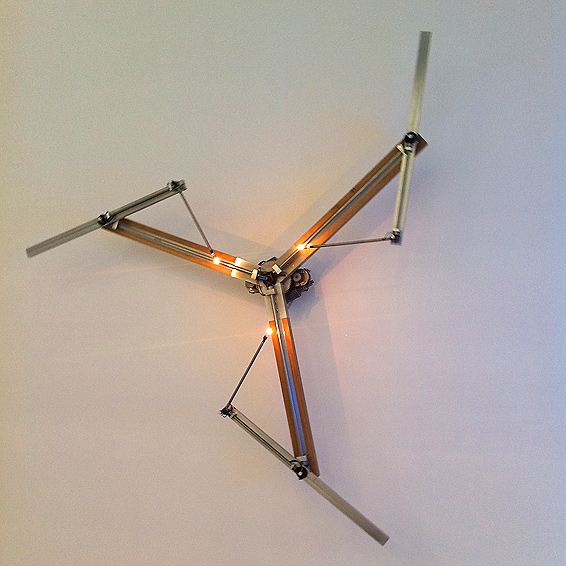
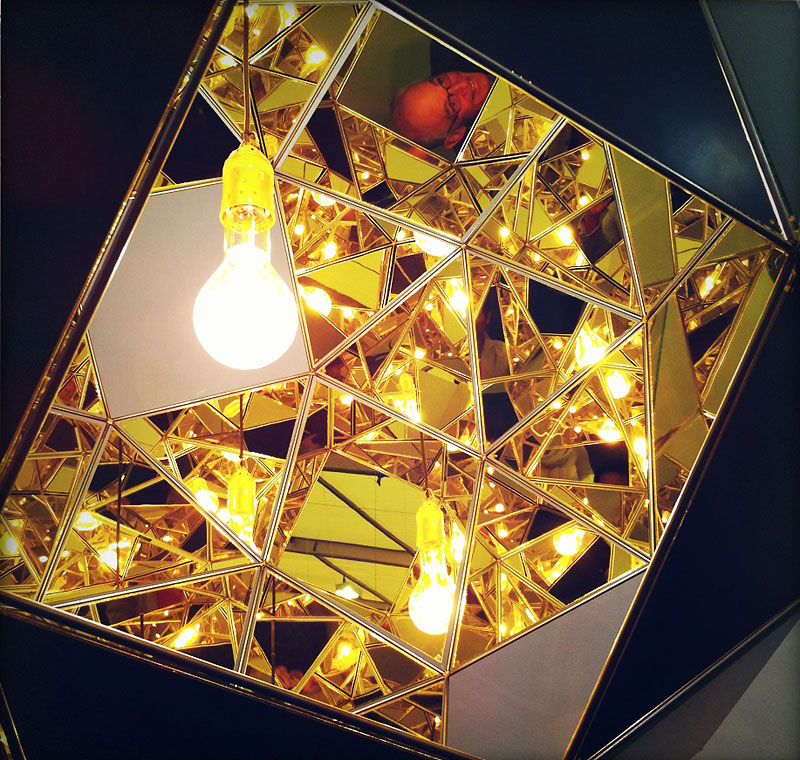

With the resurgence of handmade and traditional craftsmanship consuming the design industry, it came as no surprise that this year’s Frieze Art Fair was filled with beautifully-executed DIY style—from artworks as text to compositions crafted from beads. Juxtaposed against the handmade charm however, an exciting theme of lights and kinetic geometry married art and science for an innovative approach to sculpture.
Olafur Eliasson‘s “Untitled Sphere” (working title) (2010), a dramatic geodesic light sculpture, doubles as a lampshade. Matte black on the outside with yellow foiled mirror triangles inside, the faceted sphere creates infinite reflections of light and images inside the shade. (Pictured above right.)
Next to Eliasson’s piece at Tanya Bonakdar Gallery’s stand, Tomas Saraceno‘s “Hydrogen Cloud Explosion” (2010), a suspended geometric sculpture of transparent acrylic and tensile strings, seemed to explode outwards in the opposite direction of Eliasson’s heavy glittering imploding shade.
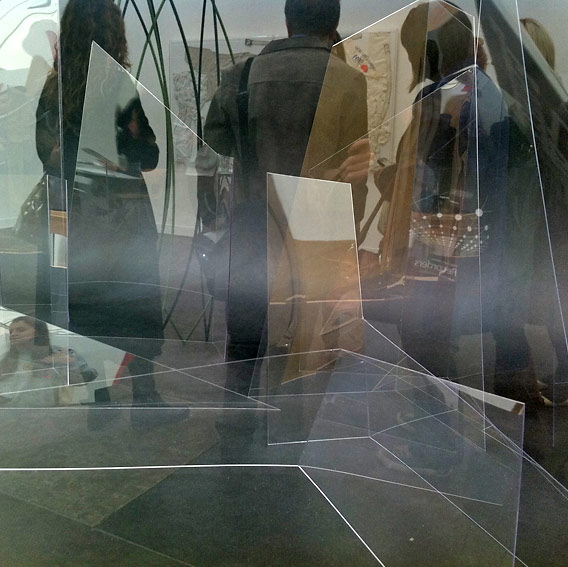
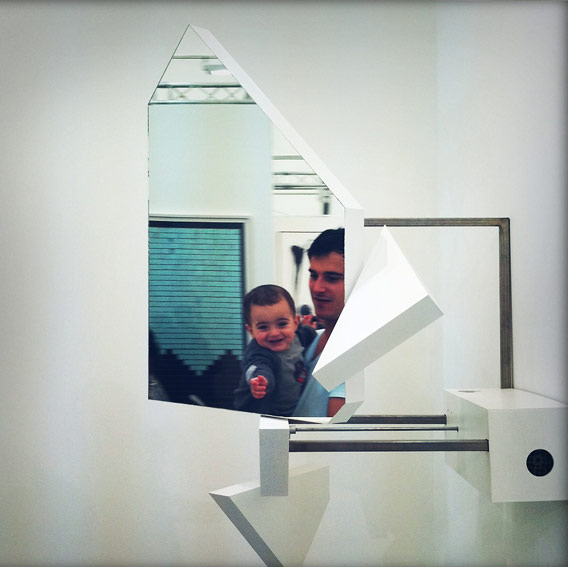
All the reflections created by Bojan Sarcevic‘s transparent deconstructionist sculpture of thin acrylic inside a glass vitrine almost rendered the work invisible. At The Approach Gallery Germaine Kruip cast more spellbinding light around with his “Counter Composition III” (2008), a geometric mirror sculpture that smoothly rotates in different directions, fragmenting the view from all sides.
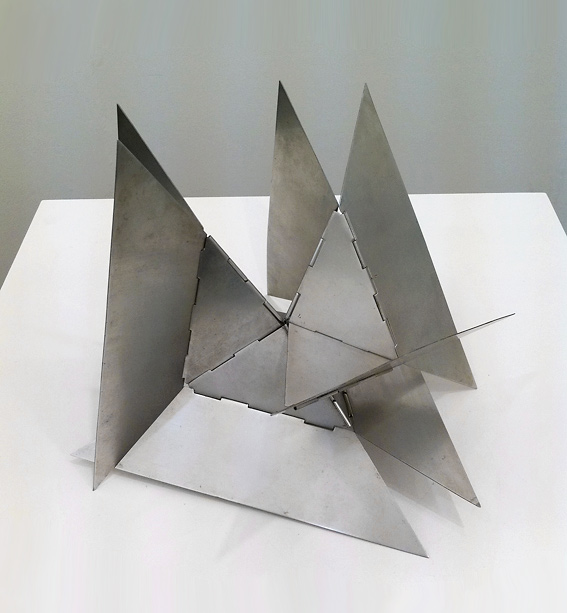
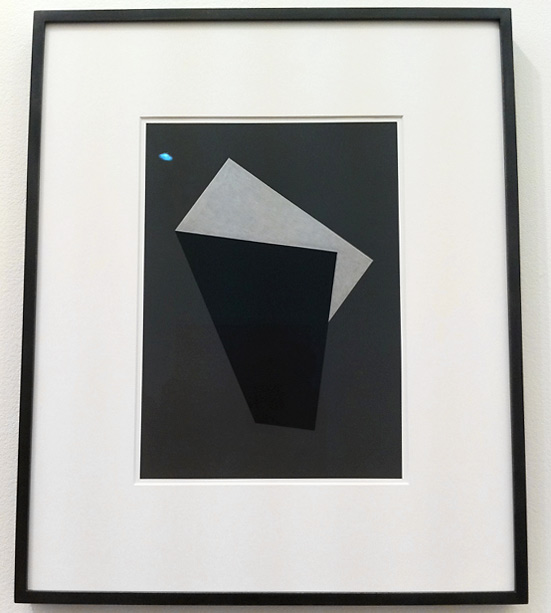
Less disorienting, Lygia Clark‘s “Desfolhado” (1960) sculpture complements her minimalist geometric collages and urges you to pick up the aluminum-hinged construction and explore its many folding forms. Clark’s work from the ’50s and ’60s seemingly inspired the contemporary fold prints by Iran do Espírito Santo at the Ingelby Gallery, “Twist 6B” and “Twist 6C” (2010).
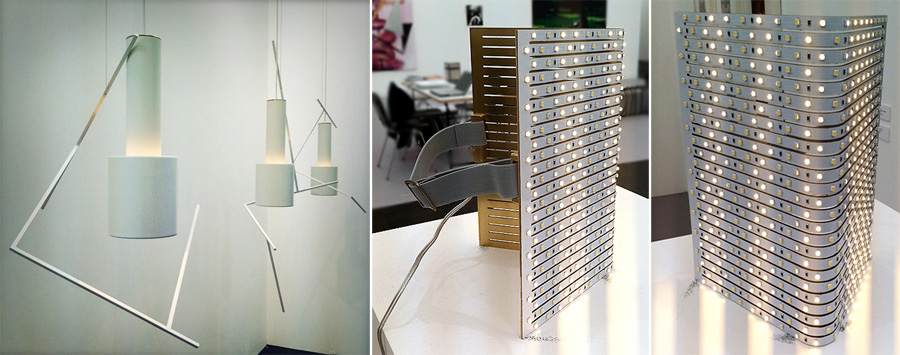
Florian Slotawa‘s series of white pendant lights, “SG 07” (2010), at the Sies + Höke Gallery, played host to parasitic geometric limbs protruding at strange angles. At the Marian Goodman Gallery, Pierre Huyghe‘s vaguely sinister aluminum and LED mask called “The Host and the Cloud” (2010), looked like it might be used as protection from Saraceno’s nearby “Hydrogen Cloud Explosion.”
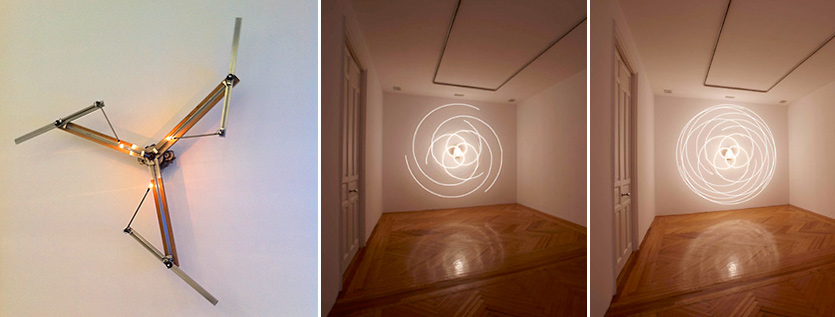
But the highlight of this theme of light and kinetic geometry was spotted at the Victoria Miro Gallery, in Conrad Shawcross’ “Limit of Everything” (2010). This revolving light sculpture echoed many of the pieces that came before, expansive as Saraceno’s “Hydrogen Cloud,” moving smoothly as Kruip’s “Counter Composition III” and as angular as Slotawa’s light arms. Shawcross’ mechanical pinwheel was a beautiful, ever changing, semaphoric display of minimalism.












